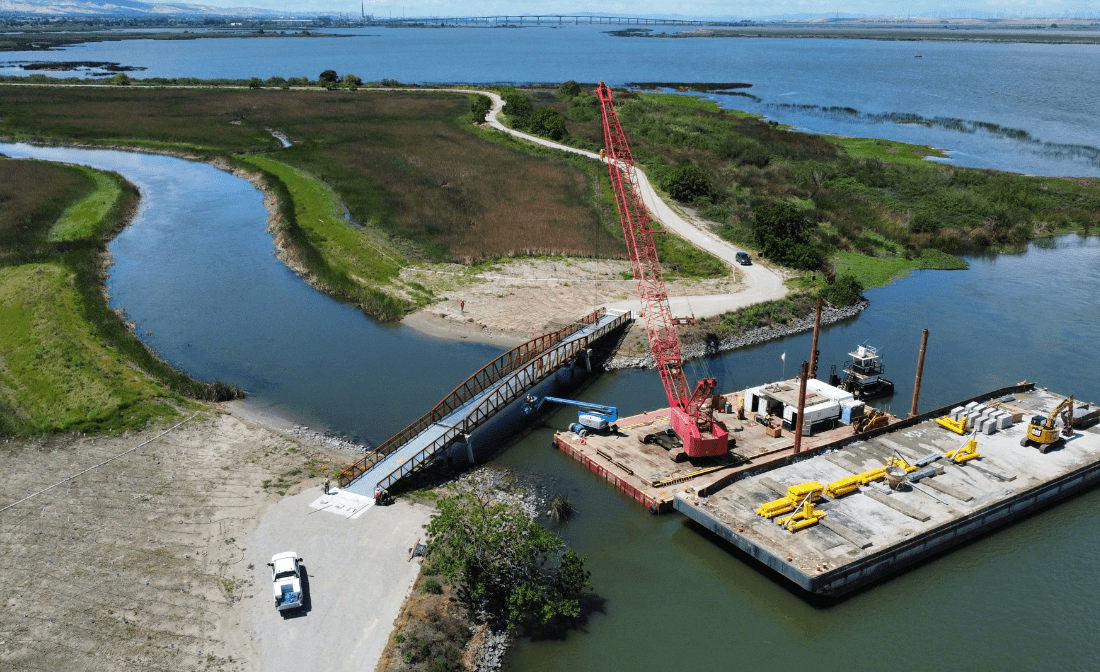Project Description
Dutch Slough Project was a Tidal Marsh Restoration Project for Reclamation District 2137 in partnership with DWR in Oakley, CA. The project involved the restoration of 662 acres of marsh wetland on Emerson and Gilbert Island to its native conditions. The project involved 5 external levee breaches, 2 internal levee breaches, levee degradations, levee raises, and the installation of 2 bridges at major breaches for future use.
The levee breaches and degradations required considerable planning in order to complete the excavations and placements in a sequence that enabled efficient and effective project management. This planning also went hand-in-hand with the project environmental permit requirements. The internal degradation and breaches on Emerson and Gilbert Islands were completed prior to the external breaches in the adjacent areas. RipRap was placed to reinforce exposed levee slopes after the external breaches were completed.
The Marsh Creek and Dutch Slough Bridges were installed on the project for future use as community trails and pathways. Precast Concrete Piles were driven for the foundations for both bridges. The Marsh Creek Bridge is a 114’ Single Span Bridge and the Dutch Slough Bridge is a 200’ Three Span Bridge on the Big Break shoreline. Both bridges are made of structural steel with reinforced concrete decking.
Dutra received a Change Order to install log boom barriers to prevent unauthorized boat traffic from reaching the interiors of Emerson and Gilbert Islands.
Major Challenges
On-Site Material Management – Excavation and placement of materials on-site was critical to ensuring that the project progressed efficiently.
Time Constraints – Project Environmental Permitting only allow for In-Water work from July 1 through October 31.
Delayed Fabricated Bridge Delivery – Procurement and fabrication of the project bridges was delayed 6 months due to the material availability resulting from the COVID-19 outbreak. This delay made it necessary for a Crane Barge to set the final bridge by water because the breach at the location was already completed.
Project Highlights
Restoration of over 500 acres of tidal marsh habitat, the reestablishment of tidal connectivity to benefit native fish species, the increased food production in the marsh that can flow out with the tides to support the surrounding ecosystem.
Project Scope
The project involved the removal of existing water control structures and the widening of channels to facilitate effective tidal flows across the marsh. The main objectives were to reestablish tidal connectivity and enhance the overall ecological function of the marsh, with the understanding that tidal marshes are important for food production and can benefit native fish species.

